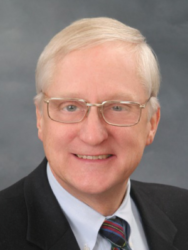Thermo-Calc recently spoke to Professor Olson about returning to his alma mater with a wealth of experience under his belt, and the opportunity this professorship affords the CALPHAD community in advancing the understanding of Integrated Computational Materials Engineering (ICME).
Olson speaks with enthusiasm that during his lifetime he has been able to witness the applications of the CALPHAD method to create alloys, which enables the quick time to market for a multitude of new, and big name, products. There are many people who have been integral to this, and Olson is quick to acknowledge those who inspired him and contributed to the growing awareness of the CALPHAD methodology as well as the materials design principles that will be the foundations used in Olson’s new courses.
There are three key influences in Olson’s early career at MIT that contribute to his lifelong pursuit of using CALPHAD and the concepts of material design—Professor Morris Cohen, Dr. Lawrence (Larry) Kaufman and… music.
Although CALPHAD has not been a recent focus of the curriculum at MIT, it does have its origins there. Olson spent many years studying and working with Morris Cohen, a man he greatly admired and who planted the seed that using science to design materials was possible:
